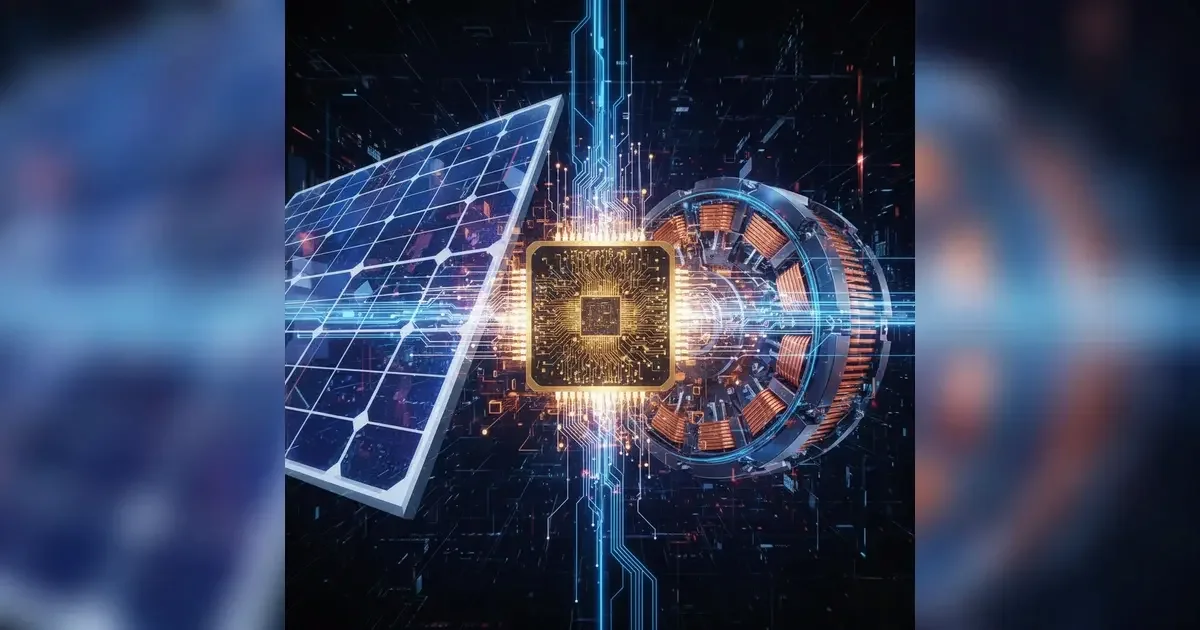Forget Software. The Future Runs on These Three "Boring" Old Metals.
Let's be honest. We’re all obsessed with the wrong thing.
We spend our days arguing about AI models, the next killer app, or which billionaire is building the fanciest virtual world. We think the future is being built from lines of code, data, and cloud servers. It all feels so clean, so abstract, so… digital.
That's a comforting illusion.
The hard, physical truth is that our entire shiny, electrified, artificially intelligent future is completely dependent on three things we’ve been digging out of the ground for 10,000 years: Gold, Silver, and Copper.
We Indians know these metals. We hoard gold for weddings, use silver for puja items, and have copper pipes for paani. We see them as stores of value, as tradition. But their real job, the one that will define the 21st century, is far more critical.
The entire "future" we've been promised—from electric cars and green energy to super-smart AI—is facing a massive physical bottleneck. And it comes down to these three metals.
Copper: The 'Daal-Chaawal' That Feeds the Future
Copper is the daal-chaawal of metals. It’s boring, it's everywhere, and nobody really thinks about it. It's in our wiring, our motors, our plumbing. And that’s precisely why it's the most important metal of the next 100 years.
The future is electric. And "electric" is just another word for "copper."
- Electric Vehicles (EVs): That Tesla or Tata Nexon EV you’re dreaming of? It's basically a 900-kilogram battery and a bunch of copper on wheels. An EV uses two to four times more copper than a standard petrol car. It's in the motor, the battery, the wiring... everywhere.
- Green Energy: A single wind turbine uses hundreds of kilos of copper. A large-scale solar farm uses tonnes of it.
- The Grid: All this new green electricity needs to go somewhere. Our ancient power grids can't handle it. Upgrading them to support millions of EVs and solar panels will require a mind-boggling amount of new copper.
- AI & Data Centers: AI doesn't live "in the cloud." It lives in massive, building-sized data centers. These centers consume a shocking amount of power, and all that power—plus the cooling systems to stop them from melting—runs on copper.
Here’s the problem: we are not mining enough of it. The world is heading for a massive copper supply gap. New mines take over a decade to open. The "green" energy transition is, in fact, a copper transition, and we’re simply not prepared for the demand.
Silver: The Unbeatable Conductor We're Running Out Of
If copper is the workhorse, silver is the specialist.
Silver has one magical property: it is the single best conductor of electricity on Earth. Period. Better than gold, better than copper. When you need maximum efficiency and minimal loss, you use silver.
And there's one industry that is swallowing the world's silver supply whole: Solar.
Every single solar panel (or photovoltaic cell) works because of it. That grid of metallic lines you see on a panel? That’s a silver paste that's been printed onto the silicon. When sunlight hits the panel, it knocks electrons loose, and that silver paste is what collects those electrons and conducts them out as usable electricity.
As the world scrambles to install terawatts of solar power, the demand for silver has exploded. The problem? The world is now in a structural silver deficit, meaning we are using more silver than we mine or recycle every year.
It’s in every phone, every laptop, every electrical switch, but the solar boom is its biggest customer. We're actively trying to find ways to use less silver in solar panels, or even replace it with copper, but it's technically difficult and less efficient. Our entire plan to fight climate change with solar power is dangerously dependent on a precious metal we're running out of.
Gold: The Metal of Immortality (For Your Data)
We think gold is valuable because it’s rare and pretty. That's not it.
Gold's real superpower is that it does not corrode. Ever. It doesn't tarnish, it doesn't rust. It is the most stable, reliable, and indestructible connector we have.
When you're building a 2-lakh rupee phone, you can't have the contacts on the microchip failing because of a little humidity. When you're building a multi-crore AI server or a critical safety sensor in a car, you cannot risk a connection failing.
That’s gold's job.
It's used in the most critical parts of technology. The microscopic gold bonding wires inside semiconductor chips connect the "brain" of the chip to the outside world. The high-end connectors in 5G base stations, AI graphic cards (GPUs), and data servers are all plated in a thin layer of gold.
Why? Because that connection needs to work, flawlessly, for a decade or more. While engineers try to use less of it (because it's so damn expensive), for the highest-stakes applications, there is simply no substitute. Gold is the guarantee. It’s the metal of technological immortality.
The Real Future is Physical
We love to talk about "dematerialization," the idea that our world is becoming less physical. It’s a nice story, but it's dead wrong.
Our intangible, digital, AI-powered future is more dependent on physical materials than ever before.
The biggest challenge of the 21st century won't be writing better code. It will be securing the physical stuff to run that code on. The new "new oil" isn't data—it's the copper, silver, and gold that allow that data to exist and move.
We’ve ignored the boring, dirty world of mining and materials for too long. But the hard truth is, the road to our electric, intelligent future runs directly through a copper mine, a silver deposit, and a gold vault.
